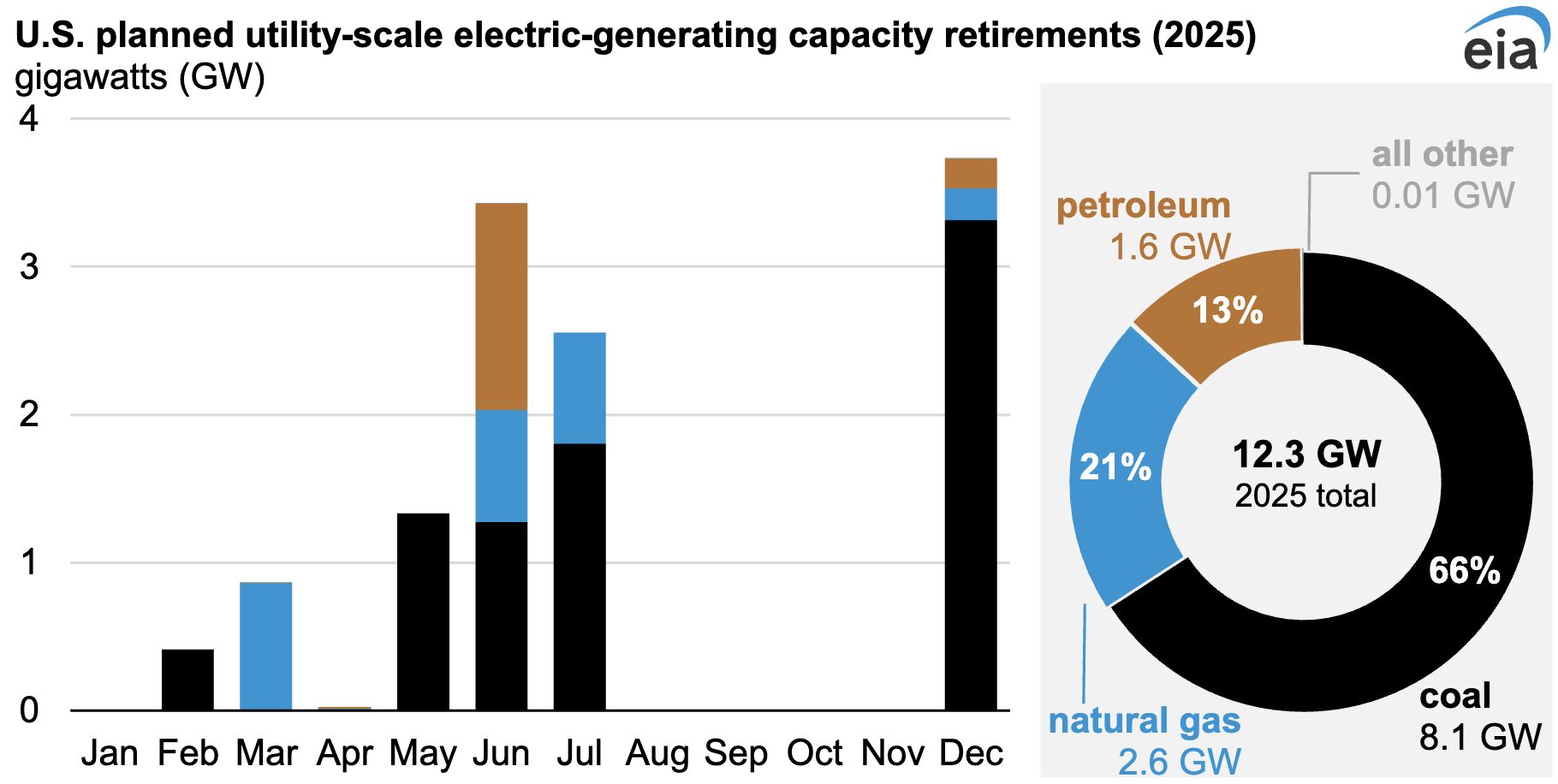U.S. Planned Coal Retirements

Note: This article was originally published here.
U.S. electric generators plan to retire over 8 GW of coal-fired capacity in 2025 — equivalent to almost 5% of the current U.S. coal fleet, according to eia.gov. Coal has been steadily losing market share for 20 years (it now accounts for only 8% of the U.S. energy supply), but it’s important to understand why.
Some blame it on climate change policies, but the primary reason for retirement is that it isn't economically competitive in the electric grid markets.
As Julianne Geiger writes for OilPrice.com, the reality is that “market forces are proving just as lethal” for coal’s future. “Utilities are opting for natural gas and renewables over coal, both for cost and emissions reasons,” she writes. “Power producers are finding it increasingly difficult to justify the expense of maintaining aging coal plants.”
The chart also shows 1.6 GW of planned retirements for petroleum-fueled plants, and it’s worth noting that petroleum provides only 0.5% of the U.S.’s electricity, according to Lawrence Livermore National Laboratory.
As for natural gas-powered plants, 2.6 GW of retirements are planned, primarily for older, less efficient simple-cycle turbine power plants that were built more than 50 years ago.
In an earlier post, I referenced analysis done by Lazard on the levelized cost of electricity from different forms of generation, and there are many situations where natural gas, solar, wind and geothermal beat coal and petroleum in price. We will continue to see petroleum and coal lose market share simply because of market forces.📚
Background & Sources:
• U.S. Energy Information Administration data: https://lnkd.in/gw3usW6h
• Julianne Geiger’s article: https://lnkd.in/g8WQ-WqP
• Lawrence Livermore National Laboratory data: https://lnkd.in/gs4XqSqa
• My earlier post on LCOE: https://lnkd.in/gGkRabNE
— Dave Welch